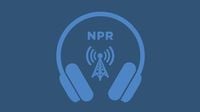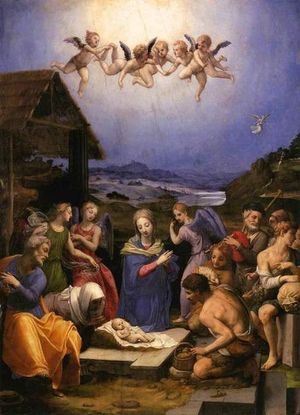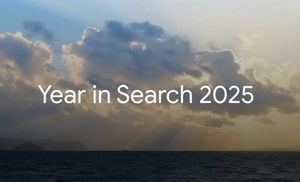It was a weekend of musical journeys, both within the elegant walls of Boston’s Symphony Hall and out amid the wild beauty of America’s natural landscapes. Two events—one a stirring performance of Handel’s Saul by the Handel and Haydn Society under Jonathan Cohen, the other the launch of Yo-Yo Ma’s podcast series "Our Common Nature"—offered audiences new ways to experience the power of music to connect, heal, and transform.
At Symphony Hall, anticipation buzzed as Jonathan Cohen took the podium to lead the Handel and Haydn Society in their first performance of Handel’s Saul since 2016. According to Arts Fuse, this was no mere revival. Cohen, fresh from a celebrated run of Saul at the Glyndebourne Festival with the Orchestra of the Age of Enlightenment, brought a sense of drama and urgency to Boston that made the oratorio feel as vivid as any fully staged opera. "The vivid performance had enough grit and intrigue to be fit for any lavish production," reported Arts Fuse.
Handel’s Saul is, technically, an oratorio. But as Cohen and his musicians demonstrated, it brims with operatic intensity. The story is a tangle of jealousy, loyalty, and prophecy: King Saul, desperate to maintain his grip on power, grows dangerously envious of the young shepherd David. Saul’s son, Jonathan, tries to soothe his father’s rage, but tragedy looms. In a final, fateful act, Saul consults the ghost of the prophet Samuel—an act that seals his doom. As Samuel foretells, both Saul and Jonathan fall in battle, leaving David to ascend the throne, his rule shadowed by sorrow and hope for a better future.
It’s a story that feels almost Shakespearean in its exploration of madness and political vengeance. And, as Arts Fuse observed, the music underscores every emotional nuance. The orchestra, bolstered by kettle drums, trombones, organ, and carillon, could surge forward with regal pomp or retreat into moments of aching lyricism. The chorus, amplified by youth choruses and the CitySing choir, brought clarity and force to the drama, their voices rising with raw power in numbers like "Along the monster atheist strode" and "Envy, eldest born of Hell."
The cast brought these characters to life with remarkable depth. Neal Davies’ Saul was a study in contrasts: his stentorian baritone capturing both the king’s mental frailty and his simmering rage. Linard Vrielink’s Jonathan, with his bell-toned tenor, served as a gentle counterweight, especially in the aria "Birth and fortune I despise," which channeled Jonathan’s alienation from privilege and his deep bond with David. Christopher Lowrey’s David, meanwhile, was both stoic and charming, his buttery countertenor voice providing a sonic complement to Vrielink’s boldness. Their onstage friendship, as Arts Fuse noted, "formed the beating heart of this performance," suggesting a connection forged through shared trauma and mutual support.
The women of Saul were equally compelling. Amanda Forsythe’s Michal hovered between desire and desperation, her delicate soprano maintaining its purity even in moments of complaint and longing. Sarah Brady, as Merab, brought a bright-tone soprano that could sour with spite or plead with impassioned empathy, particularly in her aria "Author of peace who can’t control." Even the smaller roles left a lasting impression: Jonas Budris as the defiant Amalekite, Steven Soph’s stern High Priest, Stefan Reed’s eerie Witch of Endor, Ryne Cherry’s measured ghost of Samuel, and David McFerrin’s imposing Doeg all contributed soulful conviction to the tapestry of the performance.
All told, the weekend’s Saul was a reminder of how music can illuminate the darkest corners of human experience, giving voice to the madness, love, and hope that drive us. And while the production was not fully staged, it pulsed with enough energy and theatricality to transport the audience—proving, as Arts Fuse put it, that "Saul may be an oratorio, but it’s about as operatic as one can get."
Across the country, another musical exploration was taking shape—one that left the concert hall behind entirely. Cellist Yo-Yo Ma, reflecting on the pandemic’s forced isolation, found himself longing for the outdoors. "I grew up in cities—you know, concrete. But you know what? The older I get, the more I'm attracted to places where there are more trees than people," he told NPR. This realization led to "Our Common Nature," a limited podcast series created with host Ana Gonzalez and produced by WNYC and Sound Postings, released on or before October 12, 2025.
The podcast invites listeners to join Ma and Gonzalez as they travel the country, making music in natural settings with people deeply connected to the land. The first episode, recorded at dawn in Maine’s Acadia National Park in the summer of 2021, featured a sunrise performance with Wabanaki musicians Lauren Stevens and Chris Newell. Stevens, a Wabanaki singer, performed a traditional welcome song, which Ma accompanied on his cello. "This was the first time I had ever heard our traditional music with a nontraditional instrument. And to hear the welcome song played by Yo-Yo on the cello, it resonated internally. Like, I could feel it in my body. It vibrated my soul," Stevens said, as quoted by NPR.
The gathering was more than a musical performance; it was an act of community and cultural exchange. Scientists, Native people, community members, the governor, and Deb Haaland—the Secretary of the Interior at the time—sat in a circle, sharing thoughts and stories as the sun rose. "We all spend so much time looking for purpose and meaning... and to find a group of people that it's so obvious what meaning is to them, and to be welcomed into their community, into their circle of trust... it's a world opening, and it just gives you a different perspective on life," Ma reflected during the NPR interview.
For Gonzalez, the podcast was an exercise in openness and learning. "I have no idea what your experience is, and I am here for the sole purpose of learning about them if you want to tell me about them. So it was a real exercise for me as a journalist to be like, I'm just, you know, here to learn and bring out the humanity and who they are and get the laughs, get the music, get the big emotions and figure out what makes them that three-dimensional person, who everybody is," she explained to NPR.
Ma’s approach to music, as he described it, is less about technical perfection and more about bearing witness to moments of meaning. "I use technique to try and be able to report accurately my witnessing of something that is meaningful. And in that sense, I think Ana and I have the same goals. We are reporters on, in a way, the human condition as we exist in nature," he said.
Whether in the grandeur of Symphony Hall or the quiet majesty of Acadia National Park, these musical journeys remind us that music’s true power lies in its ability to connect us—to each other, to our histories, and to the world around us. As the strains of Handel or the voice of a cello at sunrise fade, what lingers is the sense of shared humanity and the hope that, even in turbulent times, art can help us find our way forward.




